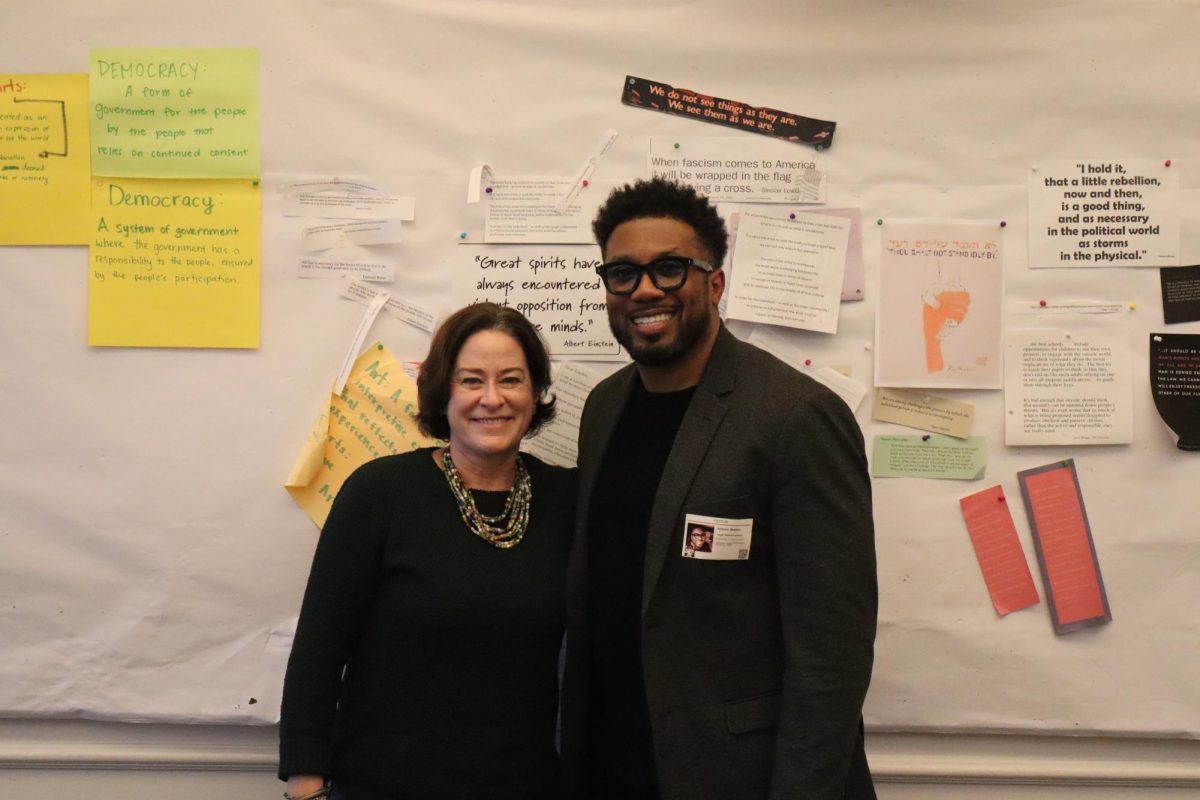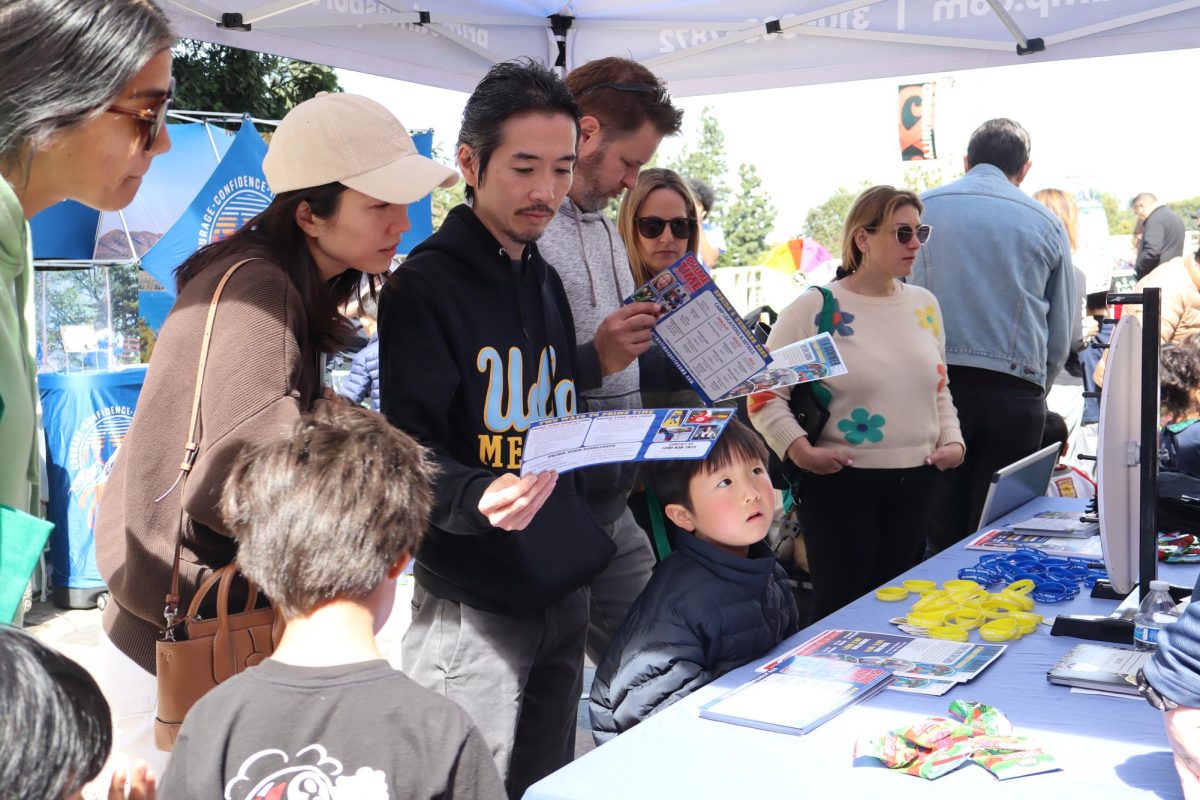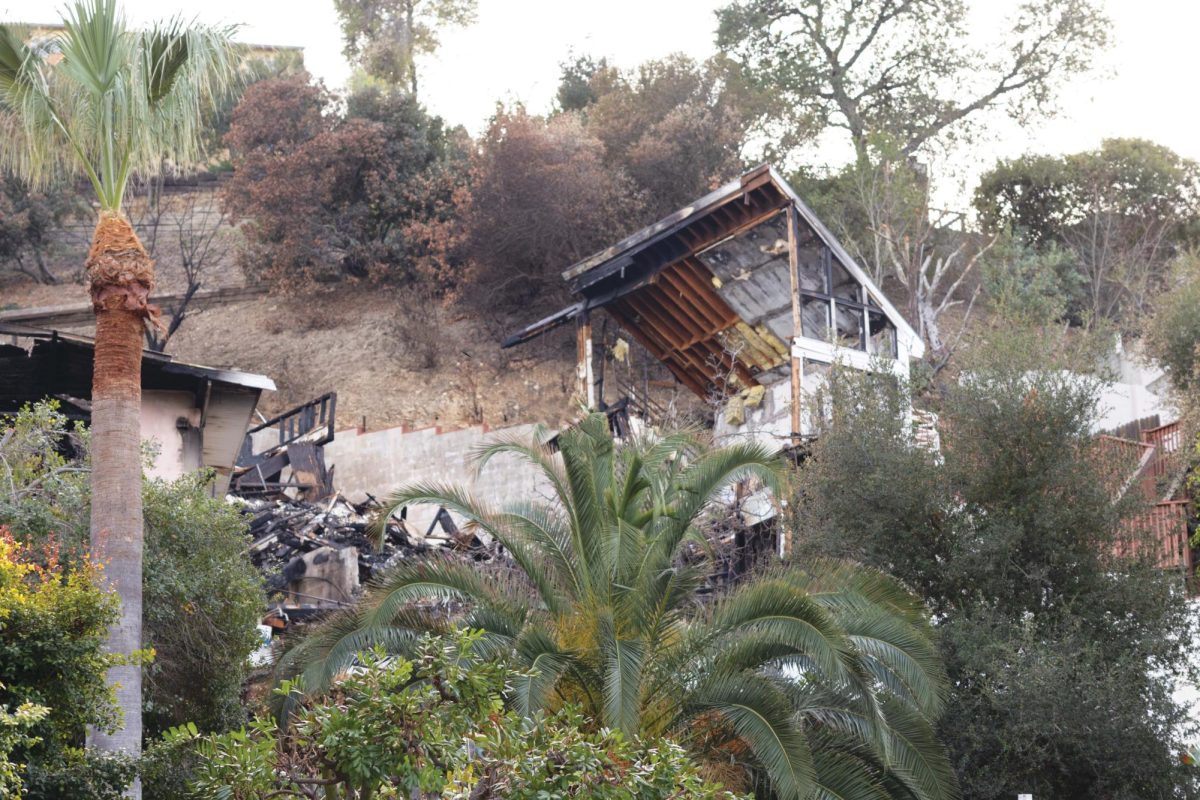Making explosives is not an everyday occurrence in the Munger Science Center. But, Rocketry Club co-founder Seth O’Brien ’25 and Mathematics Teacher and club advisor Andrew Theiss find themselves doing just that on one quiet late start morning, just a few minutes before 10 a.m. classes. They heat two beakers filled with explosive crimson powder on a hot plate. Once prepared, some of the material will be used as a ejection charge in their newest amateur rocket, which allows it to deploy its parachute. They insert self-spinning magnetic stir bars to keep the crimson powder from overheating, which risks a catastrophic chain reaction.
The worst possible outcome comes true when a small fireball engulfs the glass containers, sending a piercing bang across Munger. Smoke fills the room and sets off fire alarms throughout the school.
Co-founder Luca Umekubo ’25 said the explosion resulted from a failed Rocketry Club attempt to produce homemade ejection charges.
“We got permission from the science department to make these ejection charges,” Umekubo said. “When a rocket is in the air at the peak of its flight path, the parts of the rocket separate so the parachute comes out. The majority of people do that with small pyrotechnic charges. We decided to make [the explosive] ourselves because it’s the most effective way. And during the process, it unexpectedly went off.”
Within 20 minutes, the campus is cleared for re-entry, and classes resume as normal. When the smoke clears, no school property is damaged besides the science department’s beakers. Both O’Brien and Theiss are unharmed, but O’Brien walks out with slightly singed hair. Theiss said the only thing the explosion wounded was his ego.
Rocketry Club is one of the newest and quickest-growing clubs on campus. It began largely as an offshoot of the upper school robotics team, as itsfour co-founders, O’Brien, Umekubo, Milo Messinger ’25 and Jackson Hoffmann ’25, are all on the team, while Theiss is their former robotics coach.
Messinger said he was inspired to learn about rocketry because of his pre-existing robotics experience.
“It was originally created by me and [Umekubo] as a really fun idea that we had,” Messinger said. “We were both really interested in robotics and rockets. And we were like, ‘Hey, why don’t we just take our engineering knowledge from robotics and apply it to rocketry?’”
However, the group’s membership has expanded beyond its robotics origins. Nearly a dozen other students, most of whom are not part of the robotics team, have since joined Rocketry Club. Umekubo said he is happy it has been able to reach a wider audience.
“Robotics is the central area for kids who do that kind of engineering or STEM extracurricular stuff,” Umekubo said. “The two points of the club were to accomplish our own engineering aspirations and our desire to learn more about this field of engineering that we knew nothing about, [and] our other desire was to bring people from the community into this and work with us.”
Messinger said the club has become fixated on building ever-larger rockets with increasingly complex designs and powerful motors. Its first step was to secure a Level 1 High-Power Rocketry Certificate from the National Association of Rocketry, or L1 for short, verifying them as competent rocketry enthusiasts and permitting the club to buy high-power motors. To achieve this milestone, they successfully launched and landed a 50-inch-tall rocket at the remote Lucerne Dry Lake Bed in the Mojave Desert last November.
This windswept lake bed is completely empty most of the year, nearly two hours driving distance from Los Angeles. These factors make it a perfect launch site for the Rocketry Organization of California. It holds monthly launches at Lucerne for individual hobbyists, families and school clubs. At this event, called ROCstock, their first rocket reached a height of approximately 3000 feet. As its parachute opened and the rocket landed intact, they officially became L1-certified. But Umekubo said Rocketry Club was already preparing its next steps.
“It was our first launch putting anything in the sky,” Umekubo said. “It was really cool, but it was easy. It wasn’t a challenge. It was definitely exciting and kind of inspiring, but it was definitely a stepping stone.”
They now needed the next level of certification to gain access to even higher-powered motors. Rocketry Club returned to the next ROCstock in the Mojave Desert for their L2 certification launch April 13, swapping out the original motor for one with double the thrust. This improved version of the original rocket was equipped with more advanced computers and an altimeter to measure altitude. The club, accompanied by several parent chaperones, set up a canopy, foldable beach chairs and a grill for the day. Most members brought their own smaller model rockets, which they had built from kits over the preceding months. Some of these launched successfully, while others suffered catastrophic structural failures in midair or failed to take off entirely.
The centerpiece of the day, the club’s high-powered rocket, landed without incident, earning them their L2. Messinger said his calculations showed the peak of its trajectory reached 1450 feet. On a second, recreational launch, the ejection charge failed to detonate, which prevented the parachute from deploying, according to O’Brien. The rocket hurtled into the ground at nearly 200 mph. Several Rocketry Club members took a car into the desert expanse to search for it, discovering the mangled fuselage sticking out of a foot-wide crater. The USB drive that stored the rocket’s sensor data was destroyed on impact.
Theiss and Rocketry Club’s co-founders have invested considerable time and money into this venture. Except for the first rocket, which was covered by a $200 club grant from the school, they have purchased all the materials, motors and electronics with their own money, according to Messinger. O’Brien said these rocket parts, totaling around $3000, come from largely unregulated Internet sellers. However, Theiss said he hopes the school will help fund their endeavors as they move on to larger, more expensive projects, but nothing is guaranteed.
“The next rockets we’re gonna build consist of a [fuel] tank,” Theiss said. “And as soon as you get the tank set up and the valves set up, that’s a tremendous cost. And we’re gonna ask the school for help eventually on that. It’s cost prohibitive.”
They assemble their online-bought components into functional model rockets in a dedicated workspace in Chalmers Hall during lunch or after school. Rocketry Club successfully tested the crimson powder ejection charge on a new $300 rocket May 11, five days after the Munger explosion on Drama Lab Lawn. Hoffman remotely detonated the charge with his iPhone through Bluetooth, sending the nosecone flying several feet across the grass patio, attached to the fuselage with a rope.
Given the hazards inherent to rocketry, the club’s co-founders said they have tried to be vigilant about safety concerns. Following rocketry community and school-established guidelines, they wear safety goggles during tests and handle explosive materials with caution, especially since the crimson powder accident.
Messinger said he was not overly worried by that mishap, nor is he concerned about the safety of their future activities.
“The ejection charge that we were making wasn’t stirring correctly, and so it just heated up and exploded,” Messinger said. “In terms of how dangerous the explosion was, it was certainly a very bad accident, but no one was harmed. We’re not out here making bombs. We’re making ejection charges, so they don’t have the explosive yield of an actual explosive device.”
Theiss believes accidents are an inevitable part of rocketry, but he said he is confident Rocketry Club’s safety practices will protect members from danger.
“As far as safety goes, there will be an accident,” Theiss said. “And the reason we develop all these procedures is so that we’re 100% safe and far away from it when it happens. And no one lights these off close to them. Every rocket engineer does things remotely. It’s super dangerous, but not for us because we’re remotely detonating it.”
Rocketry Club’s existing rockets have used store-bought solid-fuel motors, which are cheaper and much less complicated, but the next one will be hybrid-fuel, using both liquid nitrous oxide and solid candle wax to generate much higher thrust. Theiss said he is optimistic about Rocketry Club’s future.
“There are a few clubs that are in a golden age,” Theiss said. “There’s so much talent and enthusiasm in the team. The last launch is a testament. Like what the hell, they just got 13 other people to go launch a high-powered rocket, and that’s absolutely wicked.”






























